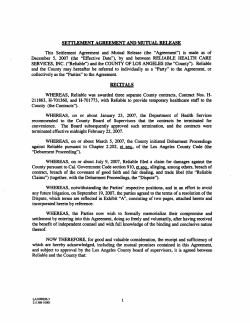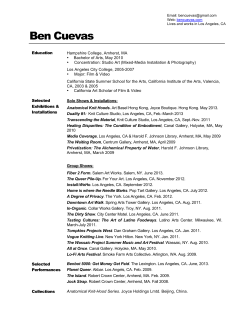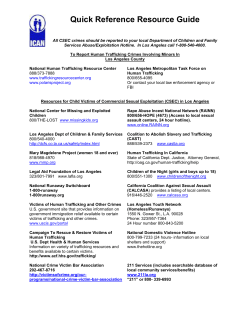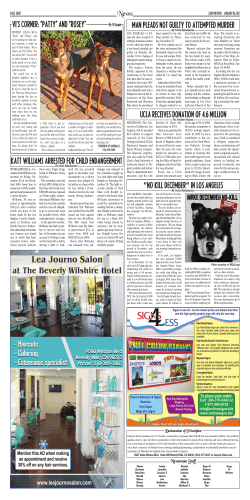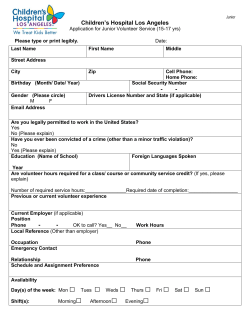
Latitude, longitude and time zones Space
INVESTIGATION www.jaconline.com.au/mathsquestqld STRAND: Space CHAPTER: Location, direction and movement Latitude, longitude and time zones The globe is divided up into parallels of latitude and meridians of longitude. LITERACY TASK • Find the meanings of these key terms: 1. parallel:............................................................................................................................................................................ 2. meridian: ......................................................................................................................................................................... 3. latitude:............................................................................................................................................................................ 4. longitude: ......................................................................................................................................................................... 5. time zone:......................................................................................................................................................................... 6. equator:............................................................................................................................................................................ 7. International Date Line:................................................................................................................................................. 8. rotate:............................................................................................................................................................................... 9. clockwise:......................................................................................................................................................................... 10. anti-clockwise:................................................................................................................................................................. This investigation looks at how time differences are determined by the location of a point on the globe. RESEARCH TASK ONE 1. How many time zones are there in Australia? 2. How does daylight saving affect these time zones? MQQLD1-latitude.pdf John Wiley & Sons Australia, Ltd 2004 INVESTIGATION: Latitude, longitude and time zones STRAND: Space CHAPTER: Location, direction and movement 1. On the world map on page one identify the equator. 2. On the world map on page one identify the North Pole and South Pole. A 3. On the world map on page one identify the prime (Greenwich) meridian. 4. On the world map on page one identify the International Date Line. The equator is an imaginary line drawn around the globe at its greatest diameter. It divides the world into the northern and southern hemispheres. The latitude of the equator is 0°. Latitude is the number of degrees north or south of the equator that a certain point lies. Point A shown above right is at a latitude of 30°N. 30° Equator 5. The North Pole is the northern most point on the globe. What would be the latitude of the North Pole? 6. The South Pole is the southern most point on the globe. What would be the latitude of the South Pole? The prime (or Greenwich) meridian is a line of reference that runs from the North Pole down to the South Pole through Greenwich, a suburb of London. The prime meridian divides the globe into the eastern and western hemispheres. The longitude of the prime meridian is 0°. Meridians of longitude indicate the number of degrees east or west of the prime meridian that a certain point lies. Point B on the figure at right has a longitude of 40°E. Prime Meridian 40° 7. The line on the opposite side of the globe to the prime meridian is called the International Date Line. What would be the longitude of the International Date Line? B RESEARCH TASK TWO The prime meridian and all other meridians of longitude are straight lines on the surface of the Earth running from the North Pole to the South Pole. However, the International Date Line is bent. Why? RESEARCH TASK THREE Use an atlas to find the latitude and longitude of the following cities: 1. Melbourne 2. Sydney 3. Brisbane 4. Hobart 5. Adelaide 6. Perth 7. Auckland 8. London 9. Paris 10. Los Angeles 11. New York 12. Vancouver 13. Honolulu 14. Rio de Janeiro 15. Moscow 16. Johannesburg 17. Baghdad 18. Delhi 19. Beijing 20. Bangkok There are 360° around the globe. From the prime meridian we can head 180° east or 180° west to reach the International Date Line. The Earth completes a rotation on its axis once every 24 hours, thus creating day and night. This means that it needs to be a different time of day on each part of the globe. 8. Given that 24 hours is equivalent to the Earth rotating 360° of longitude, how many degrees of longitude are equivalent to 1 hour? 9. How much time, in minutes, is equivalent to 1° of longitude? Time is measured in each location with reference to the Greenwich Mean Time (GMT). This is the time of day along the prime meridian. Because the Earth rotates in an anti-clockwise direction, anywhere east of the prime meridian is ahead of the GMT and anywhere west of the prime meridian is behind the GMT. The main city in the world that uses GMT is London. MQQLD1-latitude.pdf John Wiley & Sons Australia, Ltd 2004 INVESTIGATION: Latitude, longitude and time zones STRAND: Space CHAPTER: Location, direction and movement 10. The eastern coast of Australia is at a longitude of approximately 150°E. What is the time difference between the west coast of Australia and GMT? 11. Find the time: (a) in Brisbane when it is 11.00 am Monday in London. (b) in London when it is 3.00 pm Tuesday in Brisbane. 12. Los Angeles is at a longitude of approximately 120°W. What is the time difference between Los Angeles and GMT? 13. What is the time difference between Brisbane and Los Angeles? 14. Jenny is in Brisbane and wants to telephone her sister Nancy who lives in Los Angeles. Jenny wants to call Nancy at 7.00 pm Friday, Los Angeles time. At what time in Brisbane should Jenny make the call? 15. Nancy wasn’t home when Jenny rang so she left a message. Nancy didn’t return Jenny’s call till 8.00 am Saturday, Los Angeles time. At what time did Jenny receive the call in Brisbane? 16. Patrick is taking his family from Brisbane to Los Angeles. The flight leaves Brisbane at 2.00 pm on Tuesday and takes 18 hours. What is the day and time when the plane arrives at Los Angeles? 17. On the return flight, Patrick and his family leave at 11.00 pm Monday, Los Angeles time. What day and time do they arrive back in Brisbane? RESEARCH TASK FOUR In part 9 of this investigation you should have calculated that 1° of longitude was equal to 4 minutes of time. The world time zones are an approximation of this calculation. For example, Brisbane and Melbourne don’t have the same longitude, but for practical reasons they operate in the same time zone. When time zones are calculated using the figure: 1° = 4 minutes, the result is called the standard time for that longitude. 1. Calculate the standard time in each city from Research Task Three, when it is 12 noon GMT. 2. Use the map below to find the difference between standard time and the actual time zone for that city. 12 10 am 11 am noon 1 pm 2 pm 3 pm 4 pm 5 pm 6 pm 7 pm 8 pm 9 pm 10 pm 11 pm 12 1 am 2 am 3 am 4 am 5 am 6 am 7 am 8 am 9 am midnight y da on day n Su United Kingdom M International Date Line London China 15:30 16:30 Tropic of Cancer 17:30 Ethiopia Addis Ababa Tropic of Capricorn Prime Meridian Equator Jakarta United States of America Washington D.C. Los Angeles 02:30 Indonesia 21:30 Australia N 0 2500 Perth 5000 km Sydney New Zealand 03:30 Argentina Buenos Aires Zones with half an hour’s time difference 10:00 11:00 12:00 13:00 14:00 15:00 16:00 17:00 18:00 19:00 20:00 21:00 22:00 23:00 24:00 01:00 02:00 03:00 04:00 05:00 06:00 07:00 08:00 09:00 MQQLD1-latitude.pdf John Wiley & Sons Australia, Ltd 2004
© Copyright 2025




